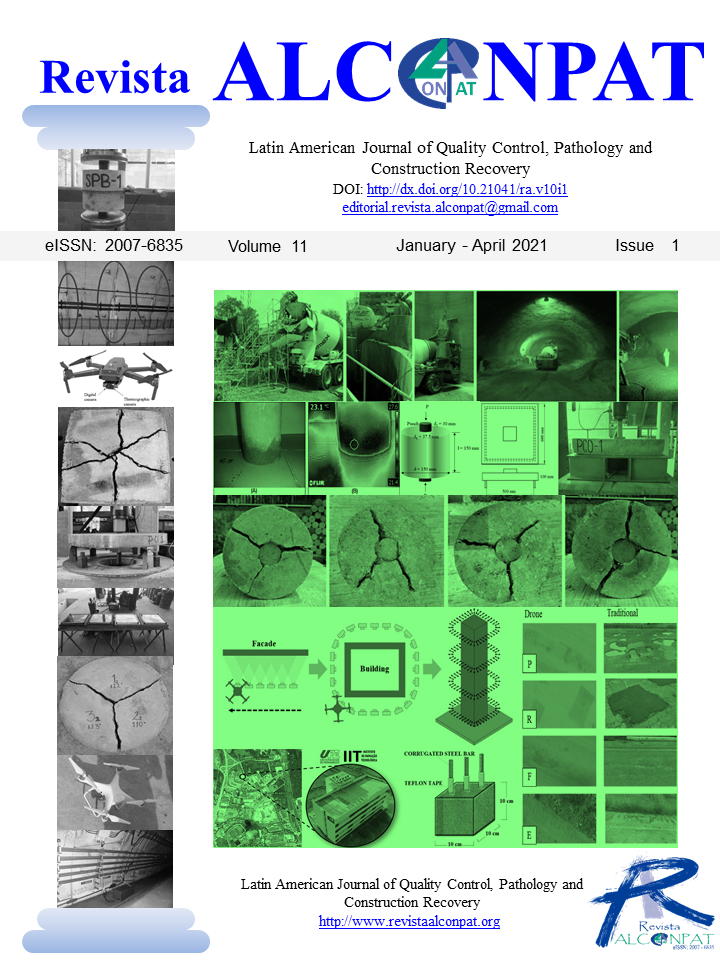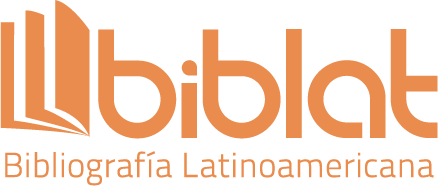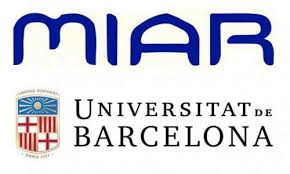Control tests of shotcrete with fibers in the tunnel of metro line 12 from CDMX
DOI:
https://doi.org/10.21041/ra.v11i1.493Keywords:
fiber reinforced shotcrete, energy absorption, round panels test, square panel test, Barcelona testAbstract
This paper three tests are evaluated to characterize the behavior of Shotcrete with metallic fibers in the primary lining of the tunnel on metro line 12 from CDMX. Three square panels (UNE 14488-5), three round panels (ASTM C1550) and four cylinders for Barcelona test (UNE 83515) were made. All can be used as quality control methods for Fiber Reinforced Concrete (FRC) in underground constructions, however, greater variability was found in the results of circular panels, in addition to being the specimens with the greatest complexity for their elaboration and test, therefore, the application of the Barcelona test is recommended for quality control on site because it is easier to prepare, handle and perform sampling and testing.
Downloads
References
Aire, C., Rodríguez, M. (2011). Estudio de las propiedades mecánicas básicas de concreto con fibras sintéticas. Proyecto de investigación. Instituto de Ingeniería UNAM P1503. Informe elaborado para EUCLID. Junio. p. 78.
Asociación Española de Normalización y Certificación. (2007). UNE EN 14488-5: Ensayos de hormigón proyectado. Parte 5: Determinación de la capacidad de absorción de energía de probetas planas reforzadas con fibras. Madrid, España.
Asociación Española de Normalización y Certificación. (2007). UNE EN 14651: Método de ensayo para hormigón con fibras metálicas. Determinación de la resistencia a la tracción por flexión (límite de proporcionalidad (LOP), resistencia residual). Madrid, España.
Asociación Española de Normalización y Certificación (2008). UNE 83515: Hormigones con fibras. Determinación de la resistencia a fisuración, tenacidad y resistencia residual a tracción. Método Barcelona, Madrid, España.
ASTM International. (2013). ASTM C494/C494M-13 Standard Specification for Chemical Admixtures for Concrete. https://doi.org/10.1520/C0494_C0494M-13
ASTM International. (2015). ASTM C 1141/C1141M-15 Standard Specification for Admixtures for Shotcrete. https://doi.org/10.1520/C1141_C1141M-15
ASTM International. (2012). ASTM C1550-12 Standard Test Method for Flexural Toughness of Fiber Reinforced Concrete (Using Centrally Loaded Round Panel). https://doi.org/10.1520/C1550-12
ASTM International. (2012). ASTM C1609/C1609M-12 Standard Test Method for Flexural Performance of Fiber-Reinforced Concrete (Using Beam With Third-Point Loading). https://doi.org/10.1520/C1609_C1609M-12
Blom, C. B. M. (2002). “Design philosophy of concrete linings in soft soil”. Doctoral Thesis. Delft University of Technology, p. 6
Burgers, R., Walraven, J., Plizzari, G., Tiberti, G. (2007). “Structural Behaviour of SFRC tunnel segments during TBM operations”. Proceedings of the World Tunnel Congress 2007 and 33rd ITA/AITES Annual General Assembly, London, England., pp. 1461-1467.
Carmona, S., Aguado, A., Molins, C., Cabrera, M. (2009), Control de la tenacidad de los hormigones reforzados con fibras usando el ensayo de doble punzonamiento (ensayo Barcelona). Revista Ingeniería de Construcción Vol. 24 Nº 2, pp. 119-140. http://dx.doi.org/10.4067/S0718-50732009000200001
Chen, W. F. (1970). “Double punch test for tensile strength of concrete”. ACI Journal, Proceedings Vol. 67, pp. 993-995.
De La Fuente, A., Blanco, A., Pujadas, P., Aguado, A. (2013). Advances on the use of fibres in precast concrete segmental. Engineering a Concrete Future: Technology, Modeling & Construction. International Federation for Structural Concrete, pp. 691-694.
De La Fuente, A., Pujadas, P., Blanco, A., Aguado, A. (2012). Experiences in Barcelona with the use of fibres in segmental linings. Tunneling and Underground Space Technology. Volumen 27, pp. 60-71. https://doi.org/10.1016/j.tust.2011.07.001
De Waal, R. G., (2000). “Steel fibre reinforced tunnel segments for the application in shield driven tunnel linings”, Doctoral Thesis, Delft University of Technology.
Gettu, R., Barragan, B., Garcia, T., Ramos, G., Fernandez, C., Oliver, R. (2004). Steel fiber reinforced concrete for the Barcelona metro line 9 tunnel lining, in: Di Prisco, M., Felicetti, R., Plizzari, G.A. (Eds.), 6th International RILEM Symposium on Fibre Reinforced Concretes RILEM PRO 039, Bagneux, pp. 141-156.
Gopalaratnam V., Gettu R. (1995). On the Characterization of Flexural Toughness in Fiber Reinforced Concrete. International Journal Cement and Concrete Composites. Vol. 17, pp 239-254. https://doi.org/10.1016/0958-9465(95)99506-O
Kasper, T., Edvardsen, C., Wittneben, G., Neumann, D. (2008). Lining design for the district heating tunnel in Copenhagen with fibre reinforced concrete segments. Tunnelling and Underground Space Technology. Volumen 23, pp 574-587. https://doi.org/10.1016/j.tust.2007.11.001
Kooiman, A. G. (2000). “Modelling steel fibre reinforced concrete for structural design”, Doctoral Thesis, Delf University of Technology.
Norma Mexicana (2017). NMX-C-414-ONNCCE-2017, Industria de la Construcción - Cementantes Hidráulicos – Especificaciones y Métodos de Ensayo. México.
Norma Mexicana (2018). NMX-C-111-ONNCCE-2018, Industria de la Construcción – Agregados para concreto Hidráulico – Especificaciones y Métodos de Ensayo. México.
Norma Mexicana (2017). NMX-C-538-ONNCCE-2017, Industria de la Construcción – Concreto Reforzado con Macrofibras – Determinación de la Resistencia al Agrietamiento, Tenacidad y Resistencia Residual a Tensión – Método de Ensayo. México.
Norma Mexicana (2017). NMX-C-539-ONNCCE-2017, Industria de la Construcción – Concreto Reforzado con Macrofibras – Determinación de la Tenacidad a la Flexión Utilizando el Panel Circular con carga central – Método de Ensayo. México.
Zollo, R. F. (1997). Fiber-reinforced concrete: an overview after 30 years of development. Cement and Concrete Composites. Volumen 19, pp. 107-122. https://doi.org/10.1016/S0958-9465(96)00046-7
Downloads
Published
How to Cite
Issue
Section
License
_______________________________
License in effect from September 2020
You are free to:
- Share — copy and redistribute the material in any medium or format for any purpose, even commercially.
- Adapt — remix, transform, and build upon the material for any purpose, even commercially.
- The licensor cannot revoke these freedoms as long as you follow the license terms.
Under the following terms:
- Attribution — You must give appropriate credit , provide a link to the license, and indicate if changes were made . You may do so in any reasonable manner, but not in any way that suggests the licensor endorses you or your use.
- No additional restrictions — You may not apply legal terms or technological measures that legally restrict others from doing anything the license permits.
Notices:
You do not have to comply with the license for elements of the material in the public domain or where your use is permitted by an applicable exception or limitation .
No warranties are given. The license may not give you all of the permissions necessary for your intended use. For example, other rights such as publicity, privacy, or moral rights may limit how you use the material.





















.png)














